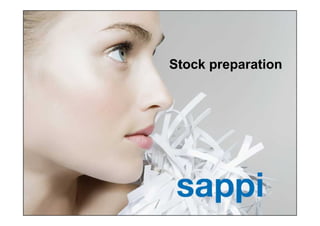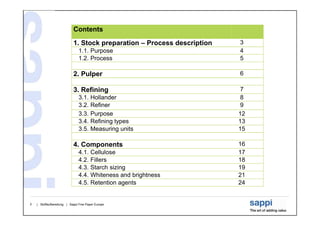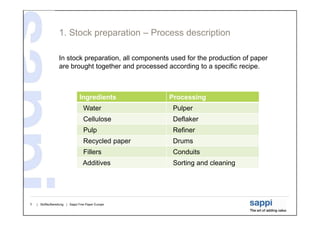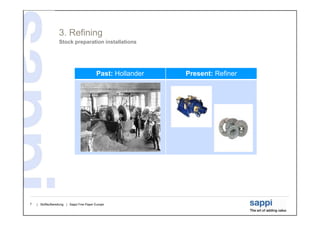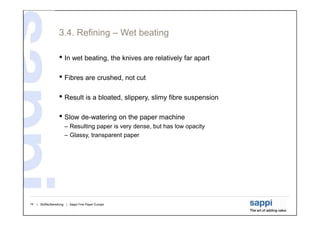The document provides a comprehensive overview of the stock preparation process for paper production, detailing the necessary components, procedures, and equipment used. Key concepts include the purpose of stock preparation, the role of pulpers and refiners, and the importance of maintaining the correct mixture of cellulose, fillers, and additives. Additionally, it discusses different refining methods, measuring units, and factors affecting the final paper quality such as whiteness, brightness, and sizing.
